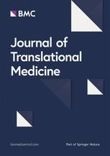
High- and low-dose BM-MSC injection versus control for treatment of knee osteoarthritis

High- and low-dose BM-MSC injection versus control for treatment of knee osteoarthritis
Intra-articular injection of two different doses of autologous bone marrow mesenchymal stem cells versus hyaluronic acid in the treatment of knee osteoarthritis: multicenter randomized controlled clinical trial (phase I/II)
J Transl Med. 2016 Aug 26;14(1):246. doi: 10.1186/s12967-016-0998-2Did you know you're eligible to earn 0.5 CME credits for reading this report? Click Here
Synopsis
32 patients with Kellgren-Lawrence grade II-IV knee osteoarthritis were randomized to one of three injection groups: high-dose autologous bone marrow-derived mesenchymal stem cell injection and hyaluronic acid injection (high-dose MSC group), low-dose autologous bone marrow-derived mesenchymal stem cell injection and hyaluronic acid injection (low-dose MSC group), or hyaluronic acid injection alon...
To view the full content, login to your account,
or start your 30-day FREE Trial today.
FREE TRIAL
LOGIN
Forgot Password?
Explore some of our unlocked ACE Reports below!

Learn about our AI Driven
High Impact Search Feature
Our AI driven High Impact metric calculates the impact an article will have by considering both the publishing journal and the content of the article itself. Built using the latest advances in natural language processing, OE High Impact predicts an article’s future number of citations better than impact factor alone.
Continue



 LOGIN
LOGIN

Join the Conversation
Please Login or Join to leave comments.